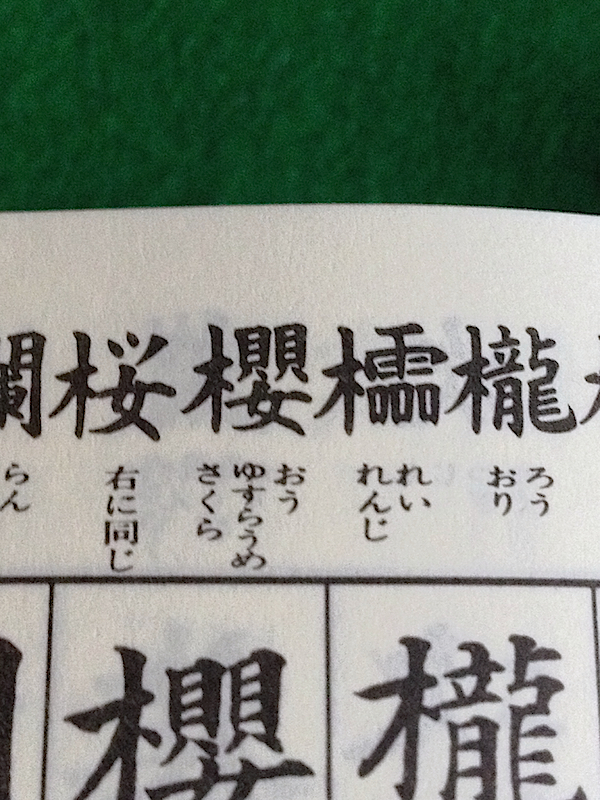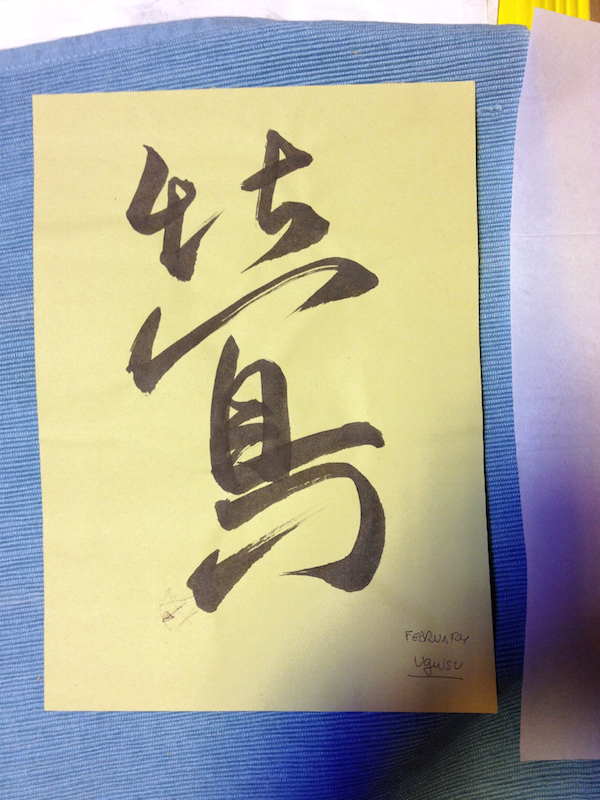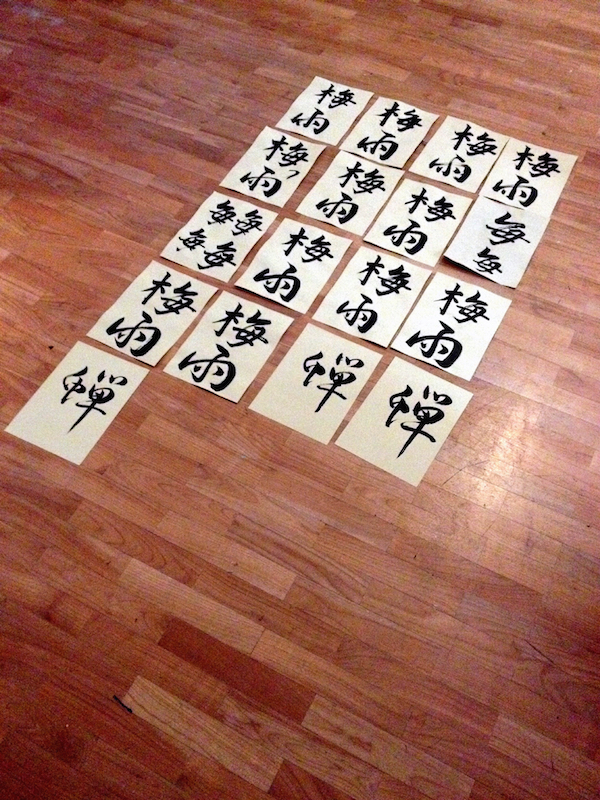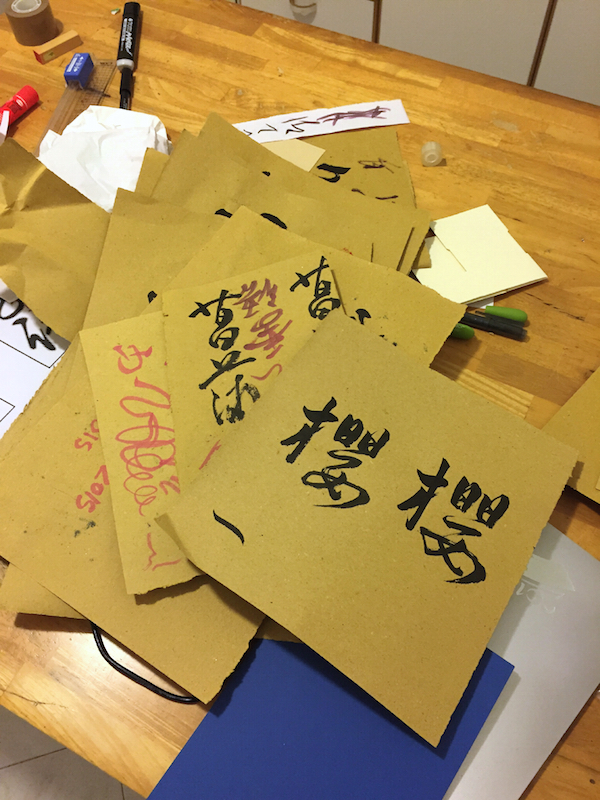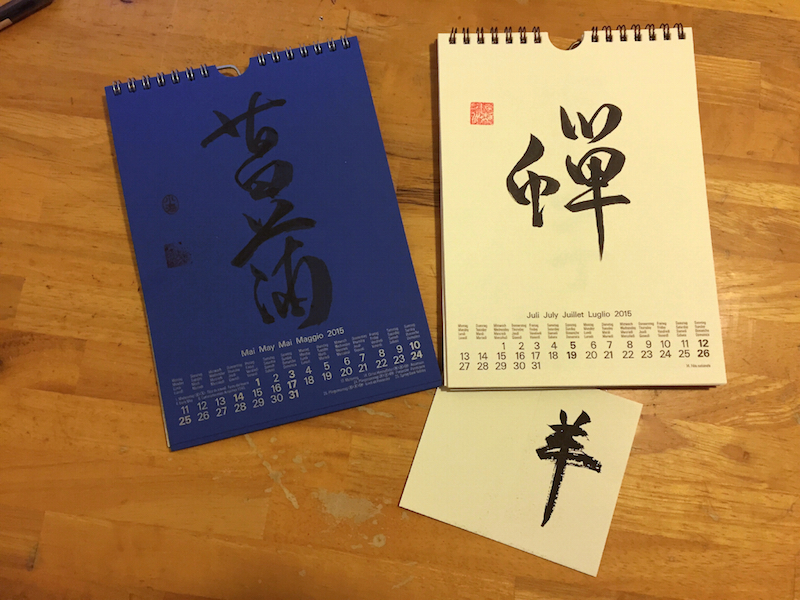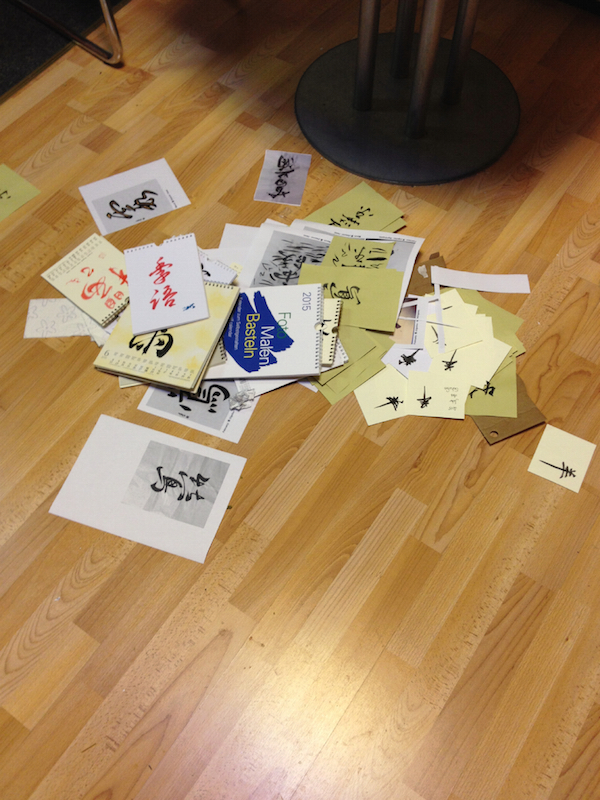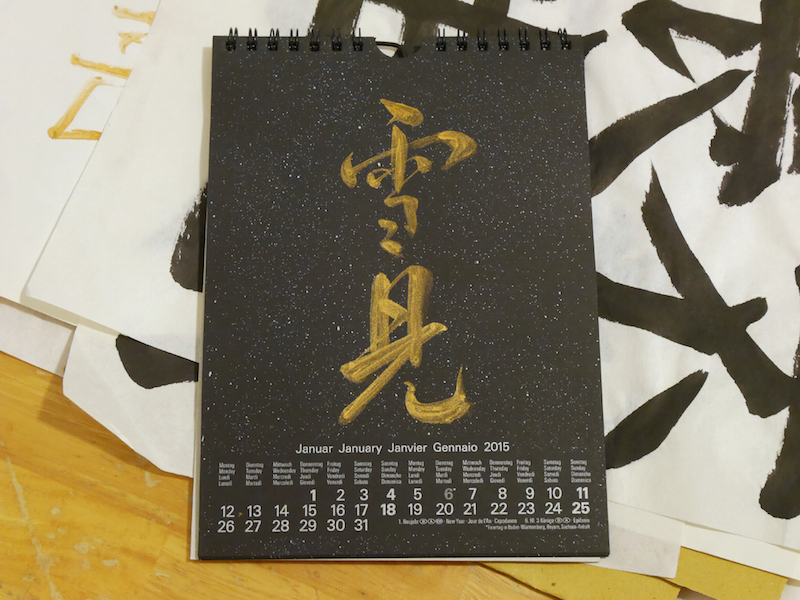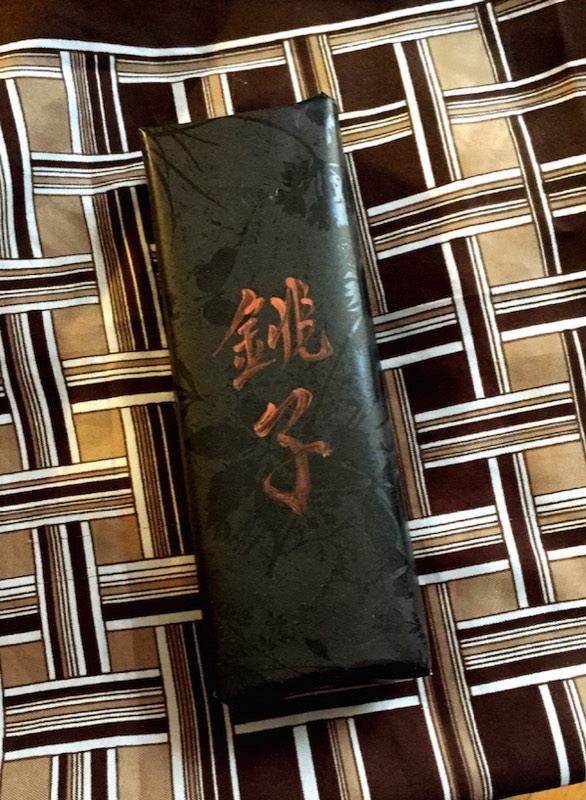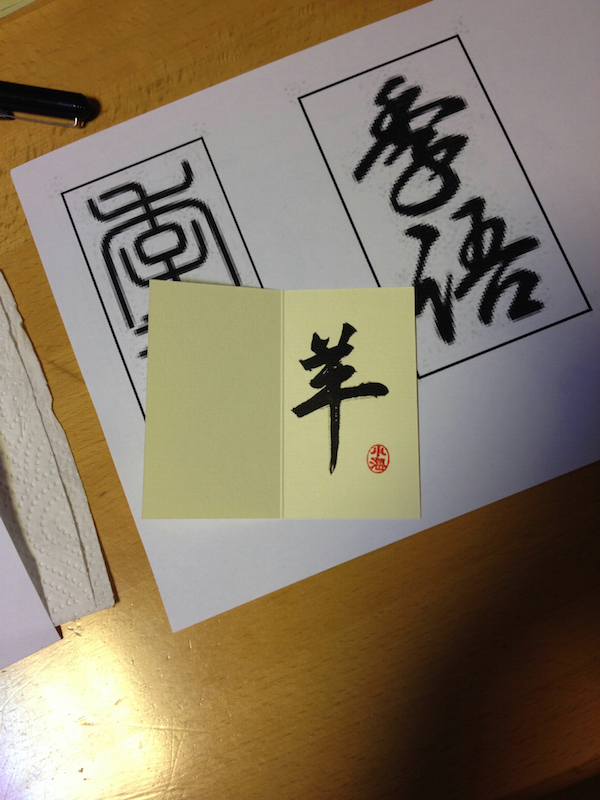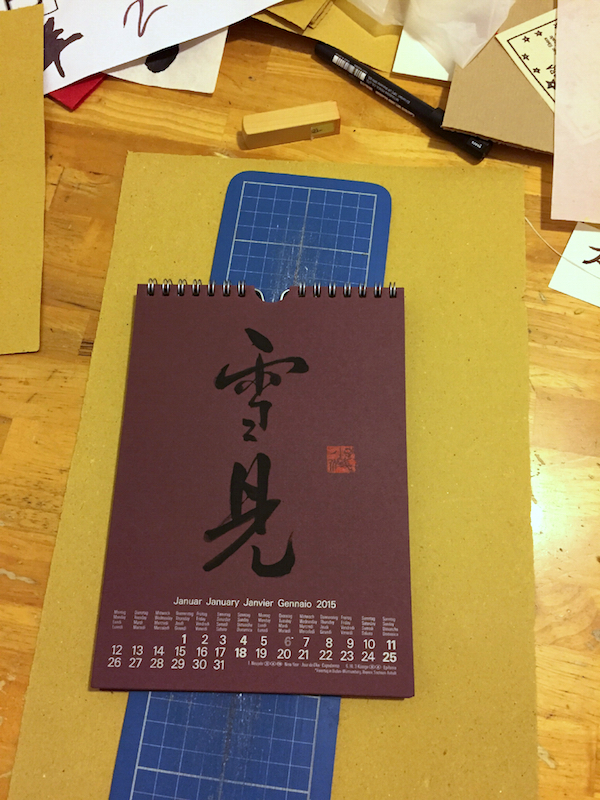
Due to some more or less unexpected changes in my life (like moving to Germany) I have let my ShoDo practice languish for a bit.
I managed to find another teacher relatively close to where I live, but I should have surely practiced more on my own.
Possibly due to me feeling somehow guilty about it, but also thanks to completely serendipitous events - like finding “personalizable calendars” for sale in a local bookshop.
These are designed primarily for people to use the mostly blank pages to affix pictures on, but they are made of nice paper (even if a bit too smooth for brush calligraphy) and available in various formats and colors, so they were practically begging to be put to use.
This was also the perfect chance to go back to more intense calligraphy practice, and so I decided to invest more time and resources in preparing Shodo-themed gifts for friends and acquaintances alike.
I contacted my Berlin-based ShoDo teacher who kindly provided both a thematic idea (more about this below) and actual help and models for the calligraphy.
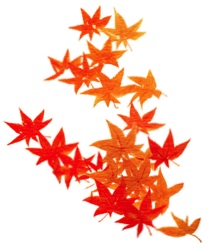
After a brief discussion via email she suggested to look into “Kigo” [季語].
Kigo are words that are traditionally used in Haiku poetry to hint at the season when the Haiku has been composed (or at least what the Haiku is about).
They are often plants or animals - for example the cherry blossom is traditionally associated to Spring, but they can sometimes also be about objects like “scarecrow”, or some traditional activitiy like going out to look at snow.
This idea fit very well with my requirement - I selected twelve Kanji (one for each month) and then started practicing these.
It took me three trips to Berlin (where my teacher helped me practicing 4 kanji at a time), and of course plenty of repetition at home, before being able to produce acceptable-quality works.
Shodo (like most other Japanese self-cultivating practices) is mostly about practicing and repeating until the action becomes spontaneous and natural.
Unfortunately in the case of an already-assembled calendar you don’t have the luxury of making a hundred attempts at a kanji, and keep only the best result - quite to the contrary, if you make one mistake the whole calendar has to be thrown away, no matter how great the other 11 months are.
